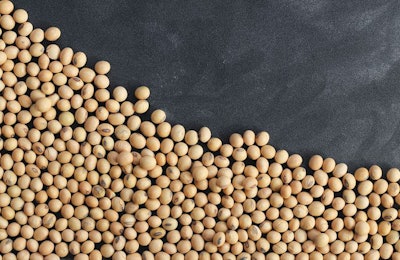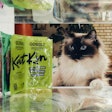
Competing pet food trends create a paradox for protein byproducts from oil seeds and cereal grains. Dog and cat owners want brands to reduce resource use and environmental impacts. Yet at the same time, pet owners want “human-grade” ingredients for their animals, which often entails rejecting all byproducts.
Byproducts from soy, corn and peanuts have traditionally been used in pet foods as sustainable, inexpensive and protein-rich ingredients, wrote a team of researchers in the journal Translational Animal Science. Scientists have documented the nutritional value of these plant-based byproducts in pet food formulations.
“However, the on-going demonization of soy- and corn-based ingredients continue to hinder their use in pet food and treat formulations,” the scientists wrote. “Ideally, the further demonstration of their protein quality and nutrient composition may encourage their favorable return as acceptable ingredients in pet foods and treats.”
Building on an existing body of evidence, the researchers tested soy flakes, peanut flour, soybean meal and corn gluten meal for the digestibility of the amino acids contained in the byproducts. All of the pet food ingredients contained a profile of indispensable amino acids. The scientists used the precision-fed cecectomized rooster assay. This surgical procedure, similar to a human appendectomy, turns roosters into an effective, efficient model for dogs’ and cats’ digestive systems.
Only peanut flour was low in lysine. Soybean meal and corn gluten meal had the highest amino acid digestibility. Compared to Association of American Feed Control Officials (AAFCO) recommended values for adult dogs, the first-limiting amino acid was lysine for peanut flour and corn gluten meal. For soy flakes and soybean meal, methionine was the limiting amino acid. Considering AAFCO values for adult cats, the first-limiting amino acid was lysine for peanut flour and corn gluten meal, while threonine limited soy flakes. Soybean meal had no limiting amino acid for cats.
“The high-protein, high-fiber, and low-fat compositions of these ingredients make them easy to incorporate into pet food formulations,” wrote the scientists in their conclusions. “Their varied amino acid compositions provide an opportunity to combine them to create complementary proteins to meet the nutritional requirements of dogs and cats.”
However, pet food makers must account for differences in the processing of these plant-based byproducts that could influence protein quality, they wrote. For example, under-processing could lead to the formation of anti-nutritional factors. Likewise, overly high temperatures could reduce amino acid levels. Ultimately, scientists will need to conduct feeding trials in dogs and cats to determine how processing parameters influence amino acid digestibility in soy, corn and peanut byproducts.














